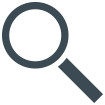We asked a few of our clients about various trends inspired by the IoT. Their answers varied from the need to deliver faster broadband and better quality to creating management solutions to effectively connect and manage data from multiple IoT devices and sensors.
Here are five upcoming trends in IoT:
The Need for Faster Broadband
Michael Weissman, co-founder of G.fast leader Sckipio discussed the need for better broadband. Weissman stated: “Today, Internet traffic is lumpy. Consider your home Internet connection before IoT. If you work in an office, there is essentially no traffic flowing over your Internet connection when you are at work. It sits idle.”
“Now, consider a smart-home where you have security cameras, sensors that detect motion, water, ambient temperature, etc. That sensing happens whether you are “using” the Internet or not. It’s a steady flow of traffic - and most of that traffic is uploading to the web,” Weismann added.
“As the number of IoT devices grow, so will the need for broadband to connect those devices to the cloud. G.fast modems which represent the next generation of broadband will be able to achieve over 1Gbps (more than fiber) over existing phone and coax wires,” said Michael Weissman. “This technology should arrive next year and will play a tremendous role in making the smart home practical."
The Quality of Things (QoT) Movement
Optimal+ VP of Worldwide Marketing David Park was recently published in the IEEE Consumer Electronics Magazine and discussed how big data solutions will assist the semiconductor and electronics industries to set quality standards for the industry. Park wrote: “No one yet knows what the expected proliferation of the many new product categories in the emerging Internet of Things (IoT) will look like in the coming years, but one thing is certain: Their success or failure will be driven by unwavering consumer demands for increased quality. Simply put, no one wants an expensive piece of technological wonder that leaves him/her wondering why he/she bought it in the first place. It is therefore imperative that any discussion about the IoT be linked directly to the quality of things. In the new age of embedded sensors in devices that interconnect and converse with one another, quality is not a nice-to-have extra—it is mission critical. The IoT inevitably will ramp up consumer quality expectations, and producing less than stellar results, especially for the semiconductor industry, will be simply unacceptable.”
Park added, “Big data holds the key to unlocking the underlying causes of myriad events across the distributed semiconductor supply chain. Applied with real-time precision, big data analytics can play a major role in ensuring the smooth rollout and success of a range of IoT products spanning multiple market segments. The data to catch problems that affect yield, efficiency, and quality already exist, but most semiconductor companies are currently not leveraging the power of data analytics to proactively mine their manufacturing data to resolve these issues while there is still time to bring about a positive result. Semiconductor companies that meet the quality challenge through state-of-the-art big data analytics will contain costs and will thrive on the competitive IoT landscape of the not- too-distant future.”
Location of Things Is Essential
Senion CEO Christian Lundquist believes there is an emerging IoT subcategory – the Location of Things. He stated in a recent IoT Agenda article: “When a concept is as far-reaching as the Internet of Things (IoT) — involving literally billions of elements — we need principles for organizing and making sense of the data it communicates. That’s where an emerging IoT subcategory known the “location of things” comes into play. Location is a vital dimension of the IoT concept that encompasses the ability of “things” to sense and communicate their geographic position. In this context, location acts as an organizing principle for anything connected to the Internet. With more and more “things” connecting to the Internet, the amount of data coming in is overwhelming. We need filters to pull out the data that is valuable for us. We are all interested in the things that relate most closely to our context — whether personally or for our work. Location is the key to context.”
The IoT’s Move Toward Decentralization
PointGrab Chief Business Operator (CBO) Itamar Roth highlighted the following trend toward IoT decentralization in a recent Smart Buildings Magazine article. Roth penned, “PointGrab builds smart sensors for building automation. In the article, Roth opined “The next generation of smart sensors, fueled by the rise of the IoT, will give us the opportunity to source and analyze ever richer levels of data. Moreover, unlike traditional analysis where data is stored and then analyzed, the IoT is moving toward decentralization and the pushing of intelligence to the edges, enabling unprecedented occupancy awareness and the execution of more sophisticated building automation tasks in real-time. These capabilities will be achieved leveraging the continued drop in processor pricing on the one hand, and the advancements in artificial intelligence technology on the other, whereby we give the sensor system the ability to acquire knowledge that ultimately helps it improve its effectiveness.”
IoT Is Nothing without a Brain of Things (BoT)
SOTI CEO Carl Rodrigues dedicated an entire blog to describe the overwhelming impact IoT data will have in the future and how managing this data overload will require a ‘Brain of Things’. Here’s an excerpt from Carl’s blog: “The more data we get from not only devices but also from external software systems, the possibilities become endless. With intelligent ‘thinking’ software that processes this data, ideally in real-time, we can do some amazing things. Understanding data will allow us to predict what is going to happen and will allow us to make decisions that will help the world. Think early prediction of health issues allowing us to save lives, avoiding transportation accidents, or even better prediction of earthquakes. A great example of IoT that we have been using for years is weather forecasting, with more and better data as well as better thinking software we have come a long way from the early days of weather forecasting. So in the end the software to analyze and think about this data is the real magic. Given the importance of this ‘thinking’ technology, and the key role it plays in completing the IoT equation, I felt it really needed a name that I could use around the water cooler. I decided to call it the ‘Brain of Things’ or BoT. Saying it another way, IoT is nothing without BoT.”
It’s going to be a bumpy, but exciting ride as corporations race to deliver next- generation IoT solutions. At Rainier, we’re looking forward to helping our clients navigate this unwieldy road to bringing commercial IoT and IoT-based solutions to market.








